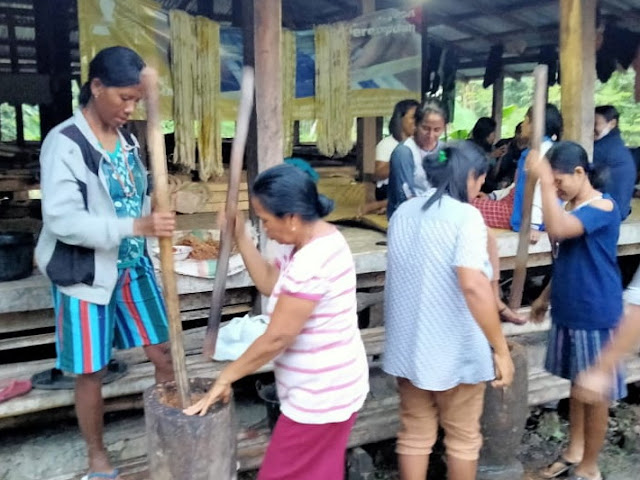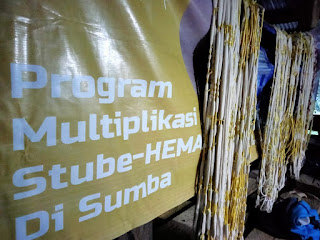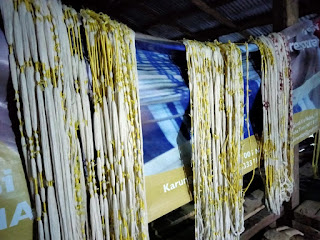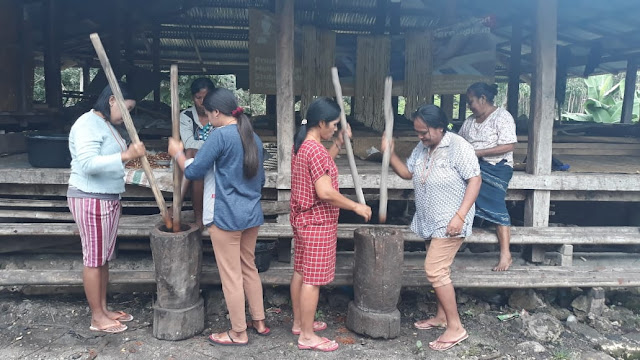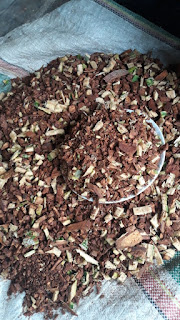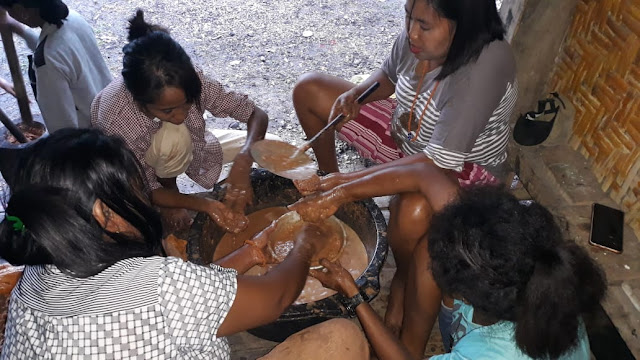Processing Ingredients of Natural Dye for Weaving
Sunday, 31 January 2021by adminstube
Living and working together will make it easier to achieve the goals because working together in cooperation eases and speeds up the completion of the works. So, it is important to grow a helpful and sincere heart among people that can create a sense of togetherness. It can affect work productivity and create unity and integrity in society, as currently done by the Stube-HEMAT weaving group, from the very beginning of the weaving thread work, till now, they are still working together. The established solidarity makes this group active and productive.
The activity is processing the ingredients of dyes through the oiling process on the hemba or motif thread (Wednesday, 27/01/2021). There are 22 sarong motifs or Hemba ready to be colored. Ten of them will use natural dye blue (kawuru) and the others will be colored red (Kombu). The purpose of using two dyes is expected to make the participants of the weaving group learn the 2 stages of natural dyes at once. As the first process of kombu coloring, Mama Yustina (the weaving trainer) and the weaving group carried out the stages of processing the oiling on the motif threads. Before being dipped in the kombu, hemba is dipped in a mixture of candlenut and Walakeri bark which are finely ground to produce oil. The immersion process takes 1 to 2 nights, then they are dried under the sun for several days. The purpose of the hemba dipped in the candlenut mixture is to make the red color infiltrating the thread easier to produce the best red color. Completing this process, then it goes to the process of using noni root or kombu.
The participants of the weaving group consisting of young women and mothers were very excited and enthusiastic to complete this stage. The candlenut and the bark are mashed together, soaked, and squeezed out of the water until they release the oil. This activity starts at 3:00 p.m. and ends at 9:00 p.m. The weaving group prepared additional blue dye ingredients, namely indigo leaves (Friday, 29/01/2021). Indigo leaves are cleaned and placed in a bowl for soaking. The indigo leaves mixed with ash and lime to get light blue, dark blue, and black colors. The coloring works with indigo leaves is called Nggilingu. Apart from that, the participants also prepare new threads to learn the design of various kinds of weaving motifs.
Commonly, the participants admitted that it was the first time for them to see and to practice the process of natural dyes. There were new things they learned, such as the ingredients used and how to process them. Some of the participants said their opinions that it was reasonable if the price of the original woven cloth from East Sumba was expensive because the manufacturing process was time and energy-consuming. Most of the participants are beginners in weaving, they hope when they are skilled enough, they can be a teacher for their children and families so that the knowledge does not stop at their level, but it will be inherited to their children even the next generation, and the culture will not vanish from Sumba. ***
